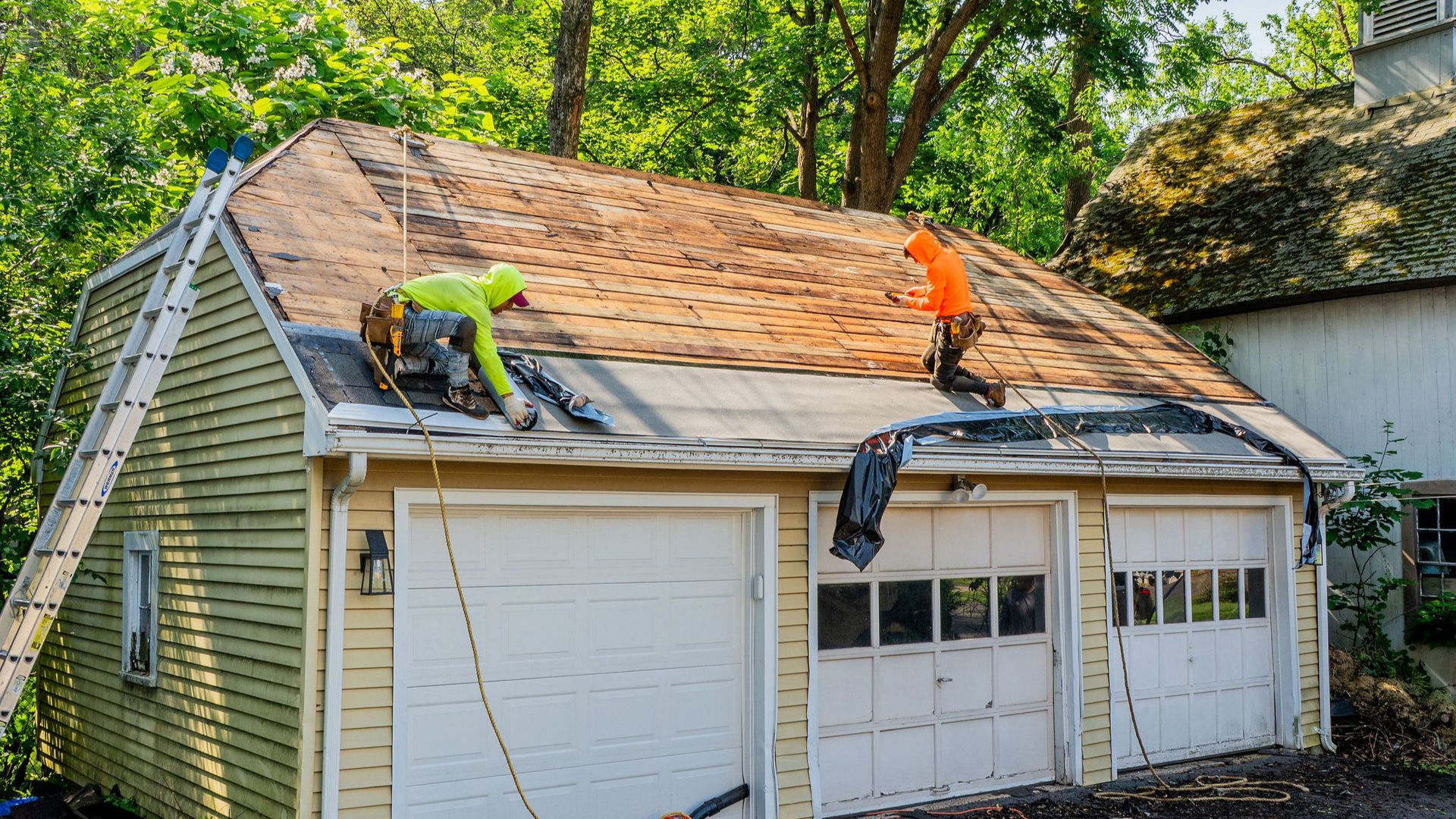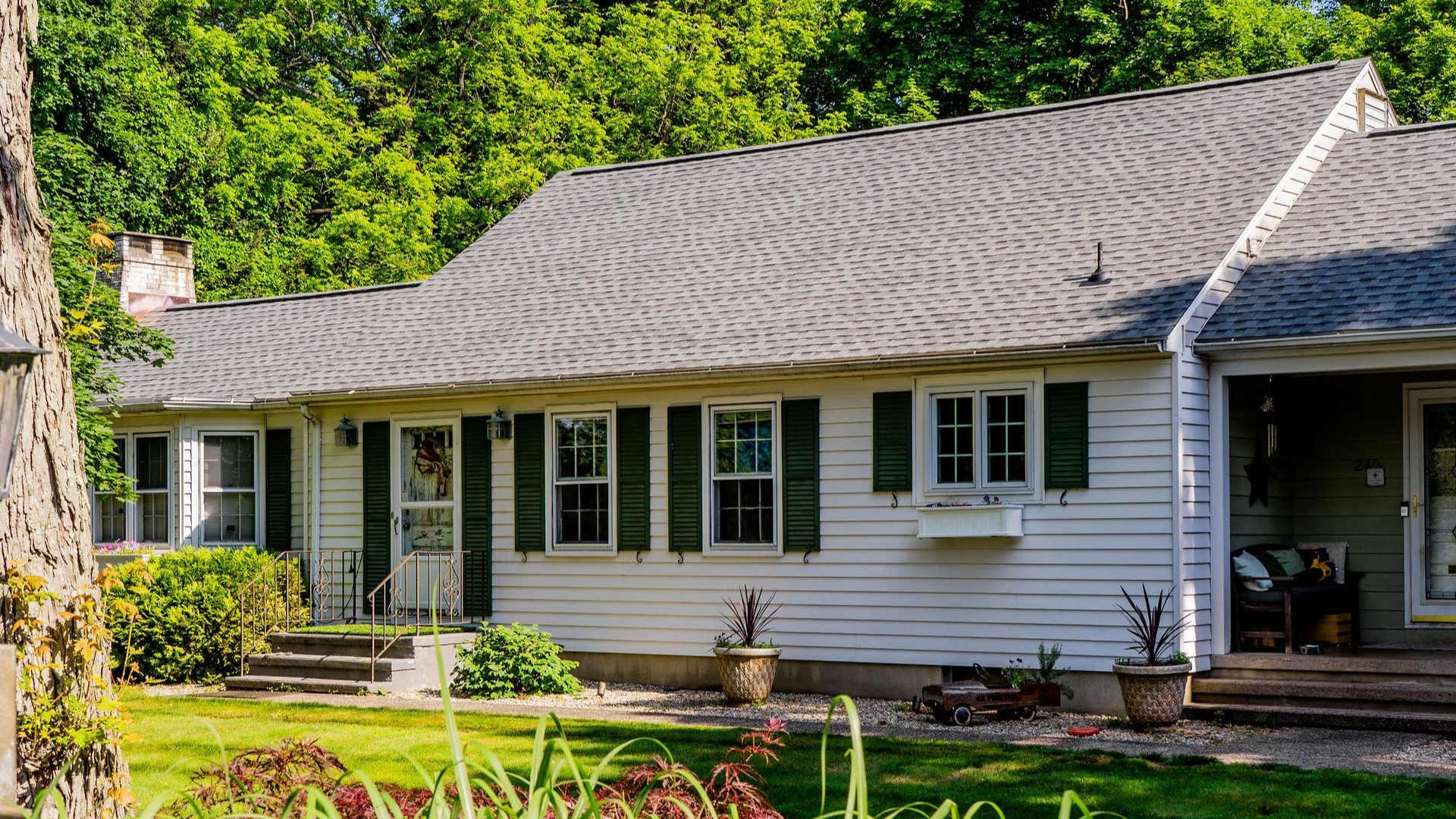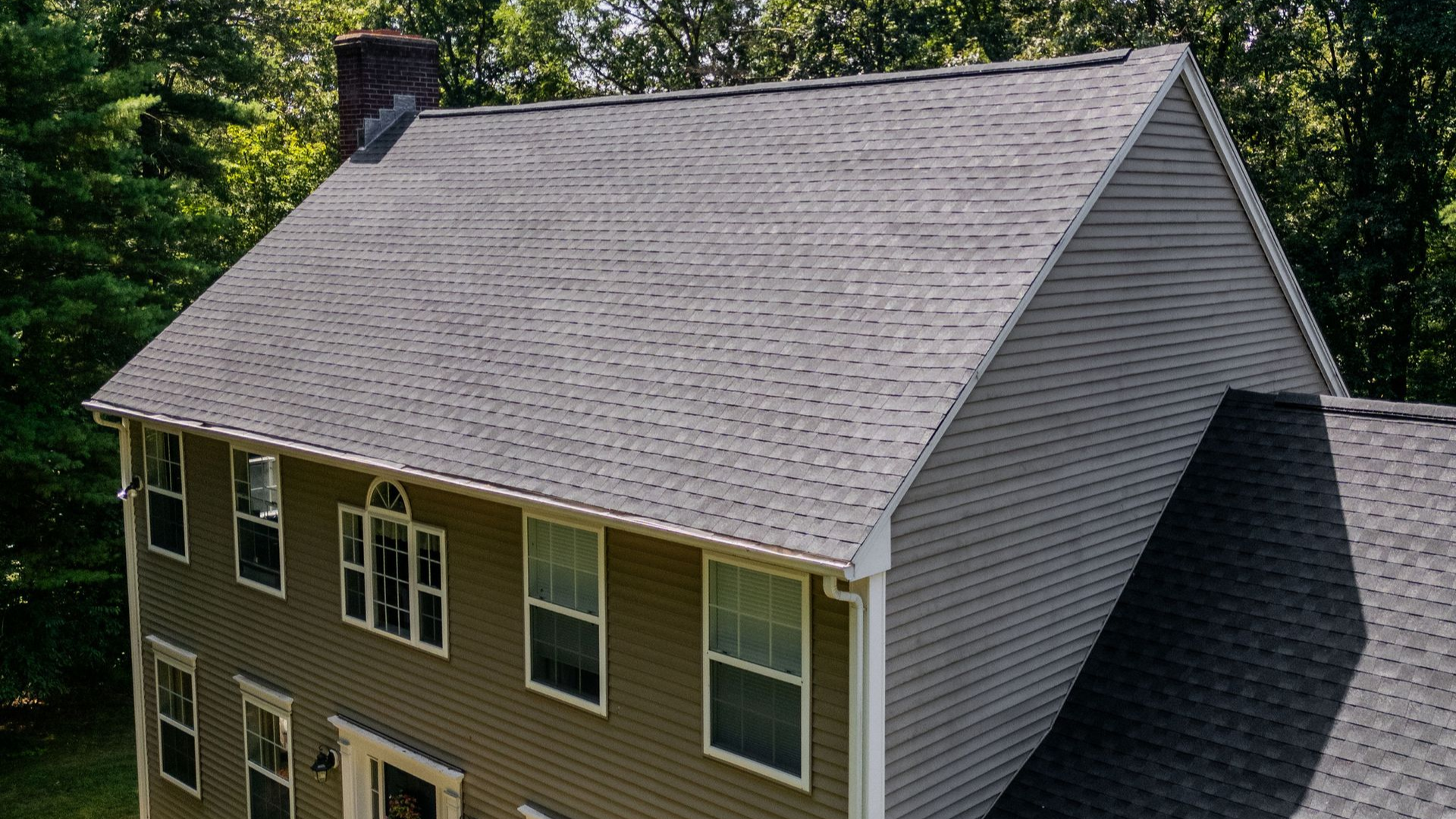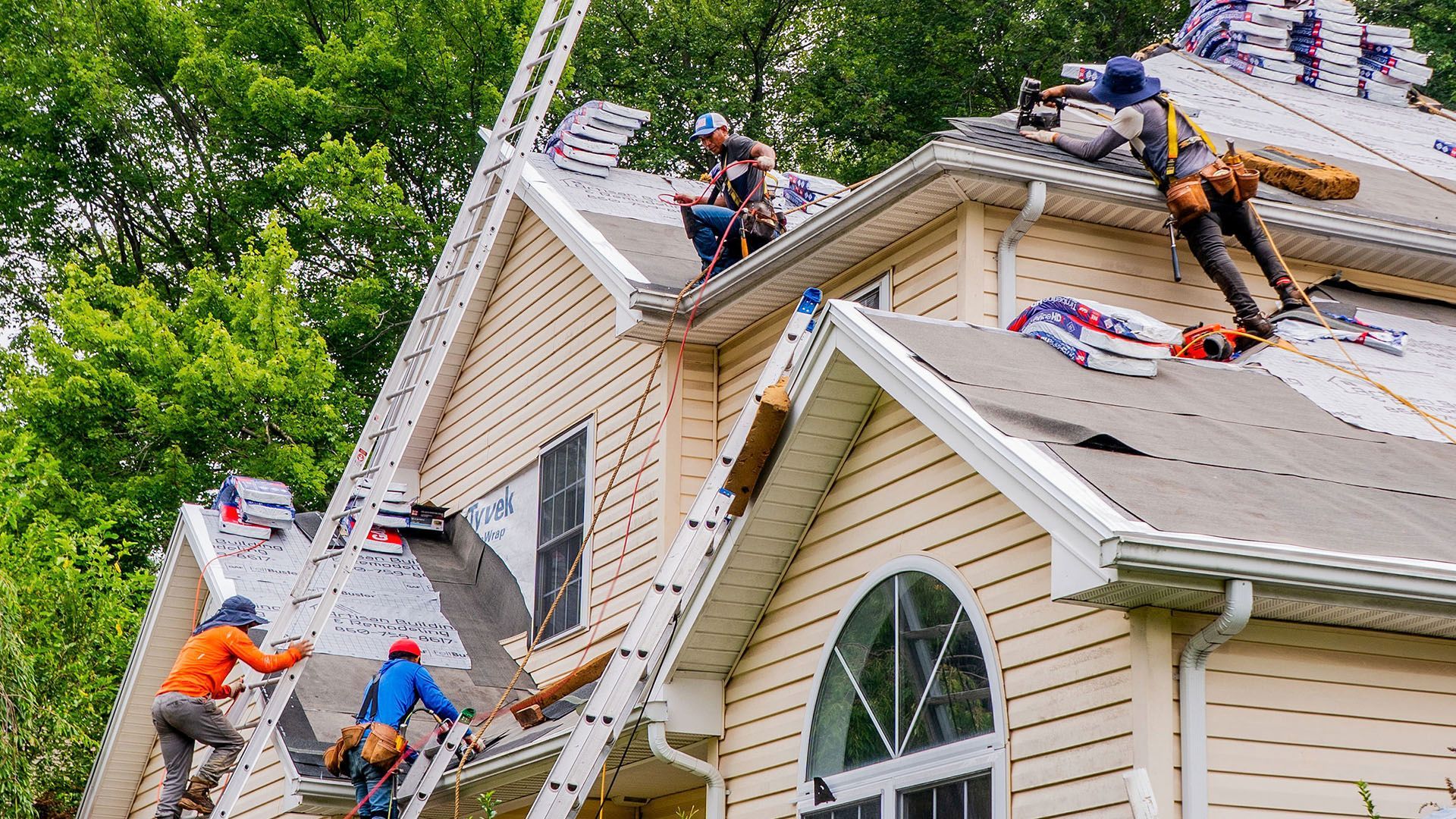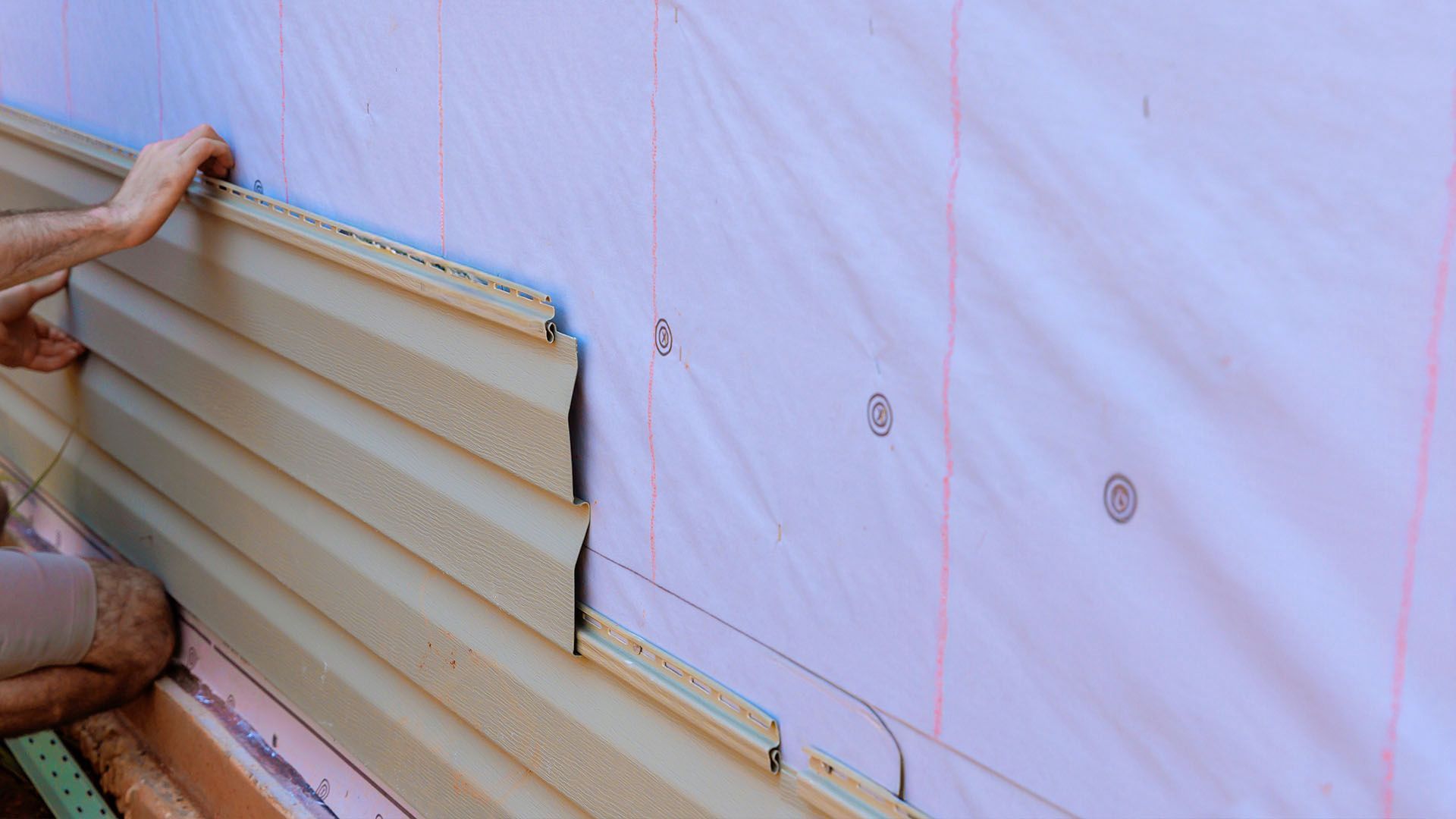Is Your Roof Safe from High Winds?
July 13, 2025
High winds can do more than just rustle the trees—they can tear the roof right off your home. With severe weather on the rise, homeowners are asking an important question: How much wind can a roof actually withstand? The answer isn’t as simple as one number—it depends on your roofing materials, installation quality, roof shape, and even local building codes.
In this guide, we’ll break down the key factors that influence roof wind resistance, signs your roof may already be damaged, and how to make sure your home is prepared for the next major storm.
Understanding Roof Wind Resistance
Wind resistance refers to how well a roof can withstand high-speed winds without damage or failure. Wind doesn’t just press against a roof—it creates lift. As it travels over your home, wind creates a vacuum effect, pulling roofing materials upward. This is known as wind uplift pressure, and it’s the main cause of roofing blow-offs and structural damage.
Areas most vulnerable to wind include:
- Roof edges and corners
- Eaves and overhangs
- Ridges and hip sections
- Shingles and flashing
Even roofs that appear intact after a storm could be hiding damage caused by uplift and repeated stress.
How Wind Speed Impacts Different Roof Types
Not all roofing systems are created equal when it comes to withstanding wind. Some materials hold strong under high wind speeds, while others may start failing at moderate gusts.
Here’s a general look at how different roof types perform:
- Asphalt Shingles: Standard 3-tab shingles can typically withstand winds up to 60–70 mph. Architectural or laminated shingles are more durable, rated for winds up to 110 mph or more.
- Metal Roofing: A well-installed
metal roof can resist winds up to 140–160 mph, making it one of the most wind-resistant options available.
- Clay or Concrete Tile: These heavy materials are excellent at resisting uplift, but only if installed with strong underlayment and anchoring systems. Poor installation can lead to flying tiles during storms.
- Flat Roofs (EPDM, TPO, etc.): Flat roofs are generally more susceptible to uplift along edges if not mechanically fastened or ballasted properly.
Additionally, roofing materials are often tested and rated under Class D, G, or H wind resistance standards, representing different levels of wind uplift performance. When replacing or installing a roof, ask about the manufacturer’s wind rating and warranty.
Signs Your Roof May Have Wind Damage
Wind damage isn’t always obvious. After a storm, take a careful look—or better yet, schedule a professional inspection. Common signs include:
- Curling, cracked, or missing shingles
- Exposed nails or underlayment
- Granule loss (bald spots on shingles)
- Water leaks inside your home after wind or rain
- Detached flashing, fascia, or
gutters
Sometimes the damage is subtle, but left untreated, it can lead to moisture intrusion, mold, insulation damage, or even a complete roof failure down the road.
What Factors Influence Roof Wind Resistance?
There’s no one-size-fits-all answer to how much wind your roof can handle. Several factors come into play:
- Roof Shape and Pitch: Hip roofs tend to resist wind better than gable roofs. Steeper pitches can create more uplift if not braced correctly.
- Roof Age and Condition: Older roofs are more vulnerable. Materials dry out, fasteners loosen, and previous repairs can create weak points.
- Installation Quality: Even high-quality shingles will fail if installed incorrectly. Fastener placement, sealing strips, and flashing are all crucial.
- Building Codes and Local Weather Patterns: Homes in coastal or hurricane-prone areas are typically required to meet stricter wind resistance codes.
- Ventilation and Fastening Systems: Adequate attic ventilation prevents pressure buildup. Proper nailing patterns and clips can drastically improve wind resistance.
How to Protect Your Roof from High Winds
The best time to prepare your roof for wind is before a storm ever hits. Here’s how to improve your home’s wind defense:
- Schedule Regular Inspections
Have your roof checked annually and after any major weather events. Catching early signs of wear can prevent major damage later. - Install Hurricane Straps or Bracing
These metal connectors tie your roof more securely to the home’s structure, reducing uplift risk during extreme winds. - Upgrade to Wind-Rated Materials
Ask your roofer about high-wind shingles, synthetic underlayments, and metal systems designed for storm-prone zones. - Reinforce Vulnerable Areas
Pay special attention to edges, flashing, and ridges. These are the first areas to fail under wind stress.
- Keep Trees Trimmed and Gutters Clear
Flying branches can puncture roofing, and clogged gutters can worsen water intrusion during storms.
When to Repair vs. Replace a Wind-Damaged Roof
So what happens if your roof has already taken a hit? The answer depends on the extent of the damage.
Repair may be enough when:
- Damage is isolated to a few shingles or a single area
- No water has penetrated the decking or interior
- Materials are still under warranty or match existing ones
Replacement is often better when:
- Large sections of the roof are compromised
- The roof is near the end of its expected lifespan
- Hidden water damage is suspected
- You want to upgrade to better wind-rated materials
Insurance Tip: After wind damage, always contact your insurance company promptly. Take photos, document all visible damage, and get a professional inspection report to support your claim.
Final Thoughts: Is Your Roof Ready for the Next Storm?
Wind can be one of the most destructive forces a home faces. Understanding how much wind your roof can withstand—and how to prepare for it—can make the difference between minor repairs and catastrophic loss.
Now is the time to ask the important questions:
- Is your current roof rated for local wind conditions?
- When was your last inspection?
- Could preventative upgrades save you thousands later?
Be proactive, not reactive. A wind-resistant roof is more than just protection—it’s peace of mind.
Frequently Asked Question's
If Your Roof is Safe From High Winds
How strong does wind have to be to damage a roof?
Wind speeds as low as 45–60 mph can start causing minor roof damage, especially to older or poorly maintained shingles. Most standard asphalt shingles are rated to withstand 60–70 mph winds, while higher-end materials or those installed to code in storm-prone areas can handle up to 110–130+ mph. Roof edges, corners, and loose flashing are typically the first to suffer.
Can a house withstand 150 mph winds?
Most standard-built homes are not designed to withstand 150 mph winds without some level of structural or roof damage. However, homes built to modern hurricane or high-wind zone codes (like Florida Building Code or FEMA recommendations) may withstand winds in the 150–180 mph range with minimal structural damage if reinforced properly with hurricane ties, impact-rated windows, and a wind-resistant roofing system.
How windy is too windy to be on a roof?
It becomes unsafe to be on a roof in wind speeds exceeding 15–20 mph, especially if you're carrying materials or using tools. Winds above 25 mph can create serious fall hazards, lift unsecured materials, and throw off balance — making roof work extremely dangerous. For safety, avoid roofing work on any day with gusts over 20 mph.
Can 70 mph winds destroy a house?
Winds at 70 mph (Category 1 hurricane force) can cause significant roof and siding damage, especially to older homes or mobile structures. While a well-built home likely won't be "destroyed" by 70 mph winds alone, shingles can be torn off, flashing may lift, and debris can break windows or damage exterior walls.
How much wind does it take to knock down a house?
Completely knocking down a home usually requires Category 4 or 5 hurricane winds, in the range of 130–200+ mph, especially if the home lacks reinforcement. However, homes with poor construction, weak foundations, or those exposed to wind-driven debris and flooding can suffer collapse at lower thresholds (e.g., 100–130 mph).








